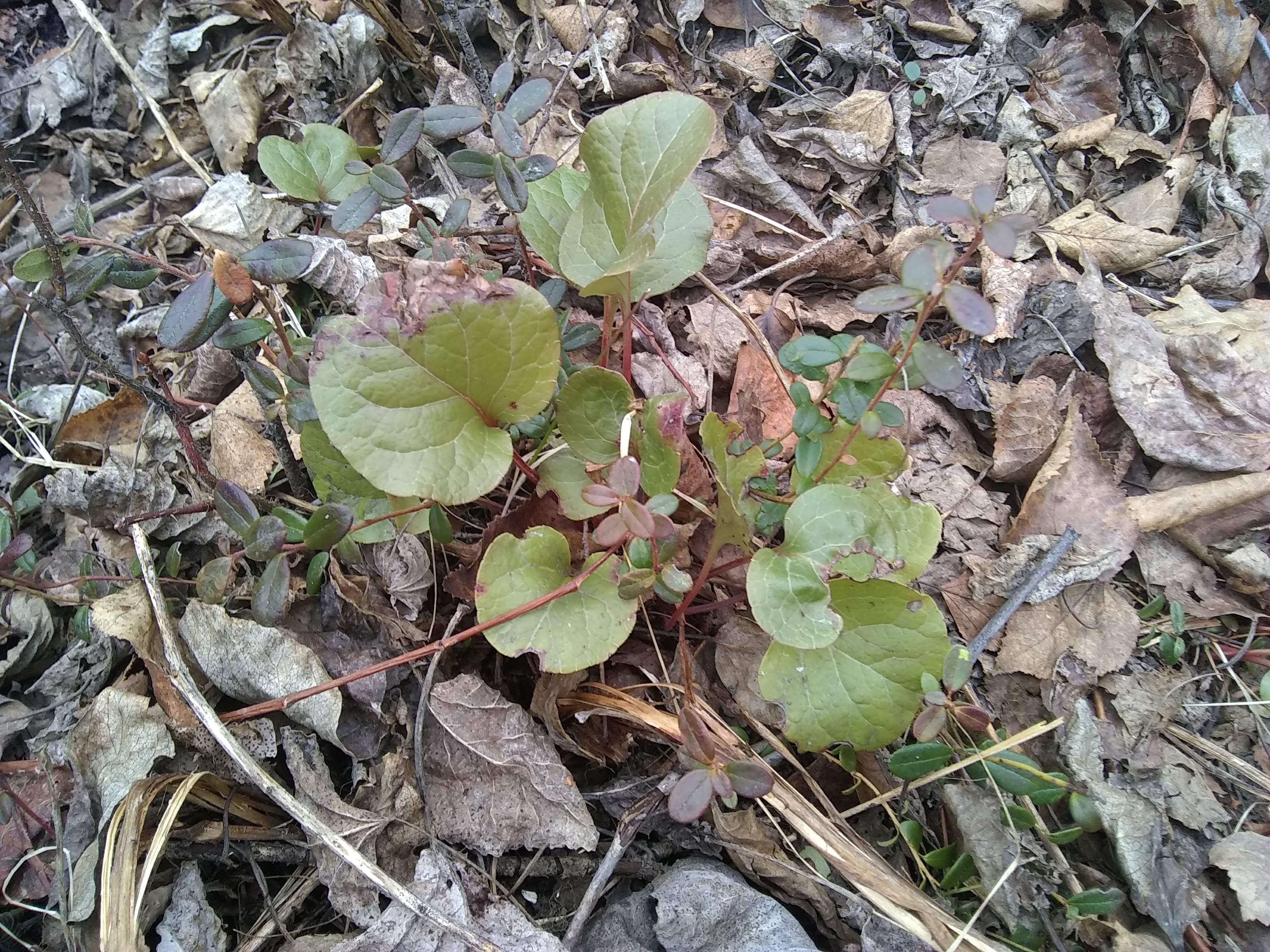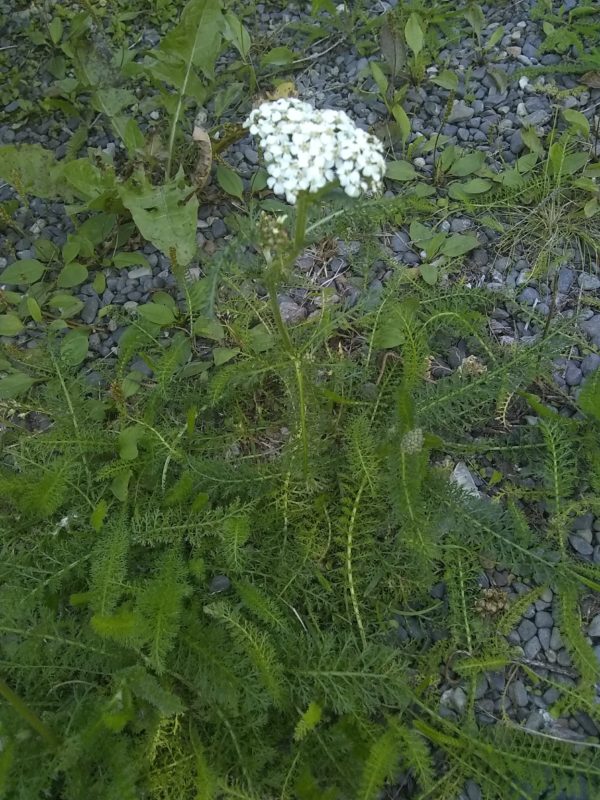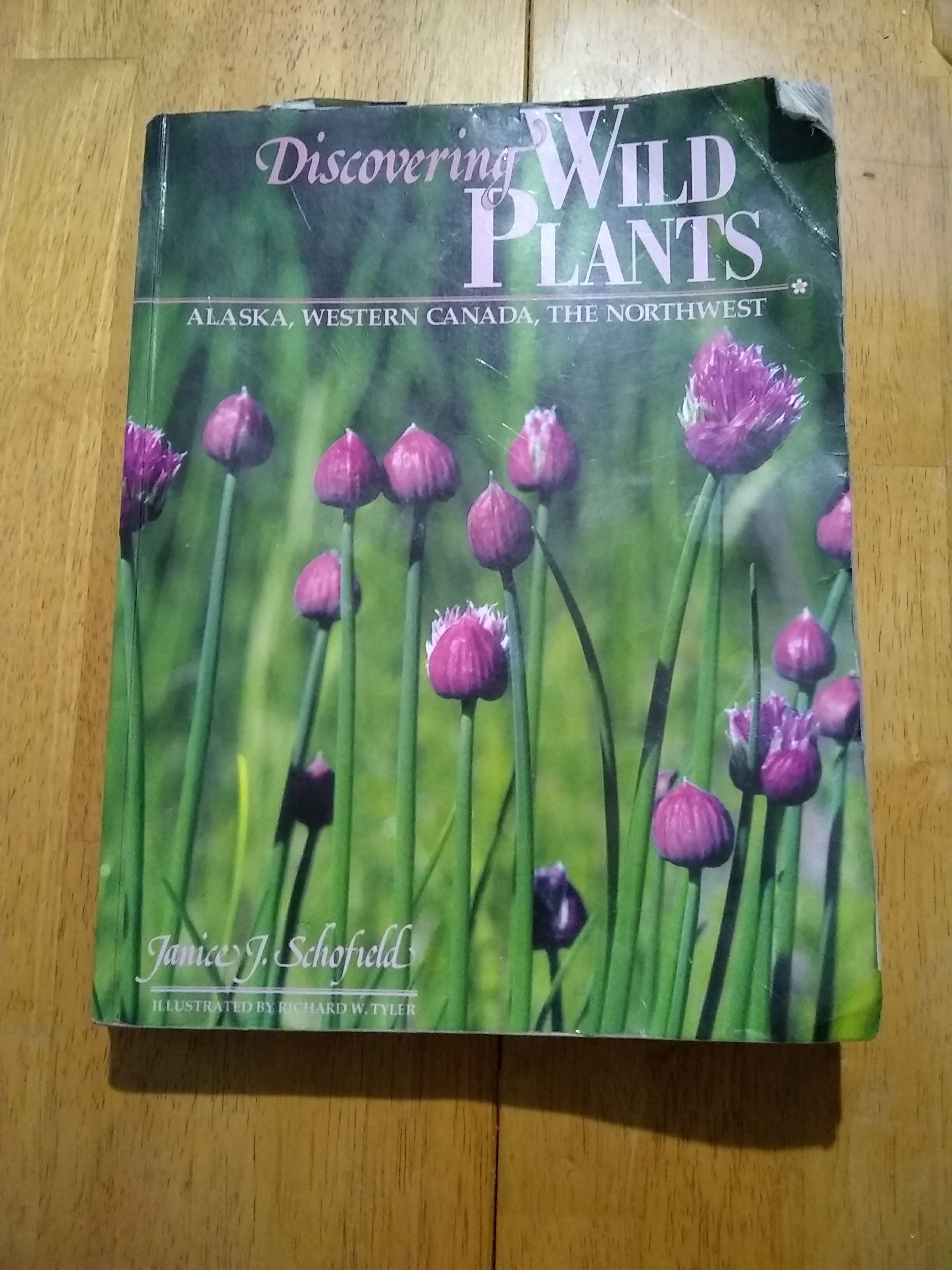Are you as excited for spring as I am? Even though there is still some stubborn snow on the ground, plants are popping up, and I just love to see them! Here are some more that I took pictures of from earlier this week. You can see other ones here.

Lingon berries: or lowbush cranberries. It is best to harvest these after the first frost. If you don’t want to wait that long, you can gather them and leave them overnight in the freezer or keep them that way until you need them.
Food use: You can make lingonberry sauce, kind of like cranberry sauce. This is another berry that is high in pectin, so an excellent addition to jams, jellies, and preserves.
Medicinally, the mashed berries were used to help relieve itchy skin eruptions like that of measles. Of course you can use the juice like you would of regular cranberries to help treat urinary tract infections.
Pyrola: Also known as wintergreen. It has absolutely nothing to do with the scent or the flavor wintergreen, which comes from the Gaultheria procumbens plant.
Food use: No known food uses.
Medical use: The mashed leaf is good for insect bites (isn’t amazing the amount of plants that are good for that up here with all of the mosquitoes we have). Pyrola contains ursolic acid which is used in the treatment of kidney problems. You can use it by making a decoction using one teaspoon of the chopped leaves in one cup of water for 15-20 minutes. The decoction can also be used as a mouthwash for canker sores and gum inflammations (while this will help with gum disease, you still need to floss, as it the bacteria will come back if you don’t properly floss and brush your teeth – end rant of a former dental assistant ![]() )I have also learned that a balm made from pyrola is excellent for nerve pain, whether it is neuropathy due to diabetes or nerve damage. My husband, Jason, has nerve damage in his fingers and hands and has used the balm successfully to regain feeling in the tips of his fingers.
)I have also learned that a balm made from pyrola is excellent for nerve pain, whether it is neuropathy due to diabetes or nerve damage. My husband, Jason, has nerve damage in his fingers and hands and has used the balm successfully to regain feeling in the tips of his fingers.

Labrador Tea: In this photo, you can see a photobomb of my dog, Mocha. She loves taking hikes with me while I’m harvesting.
Anyways…You’ll be happy to know that labrador tea is very useful.
Food use:As the name implies, you can make a tasty tea out of it that has a warming effect.
Medicinal uses: It has a light laxative effect. It is also good for colds with its expectorant and diaphoretic (ability to make you sweat) properties. When Jason hurt his wrist, I made the tea out of this and it helped with the inflammation, so it is excellent for helping with inflammation.

High bush cranberries: As with any of the tart berries, you can wait until the first frost to make sure they’re more palatable or you can collect them and put them in the freezer overnight.
Food use: Jams, jellies, preserves and the like. The flowers can be added to different batters.
Medicinal: The bark is aptly named cramp bark as a decoction can be made to help aid in menstrual cramps as well as stomach cramps. The tincture can be used for asthma or cold.

Dwarf dogwood: Now, if you’ve heard that dogwood is poisonous, that would be the American Dogwood, which is a tree. Food use: This little thing is edible. While it’s bland in taste, it has a lot of pectin, so you can add it to your jams, jellies, and preserves to thicken it instead of buying pectin.
Medicinally, the dried bark and root is good for colds and fevers.

Daisy: Daisies are a common flower that until recently I didn’t know had food or medicinal properties as I had been focusing on Alaskan plants only and none of my resources on Alaskan plants included daisies! Recently, I was thinking about it. There are other flowers in the daisy family that are useful. And then I found these daisies growing in my yard, so I double checked all of my resources and found that YES, daisies are more than just a pretty flower.
Food use: The young leaves can be added in salads. You can also use the flower heads in vinegar instead of capers.
Medicinal use: The flowers are what is used for making teas and tinctures. It is used for coughs and stuffy noses. The tincture is best for liver and kidney problems as well as diarrhea.

Clover: Here’s another one you’ll probably recognize. There are three different types: red, white, and crimson. I’ve only seen red (which really looks purple) and white up here in Alaska. It is considered a weed by many, but I love it.
Food use: You can eat the heads raw, which I love to do. The leaves can be steamed and flavored with butter, or raw, added to salads. They can also be added to stews, omelettes and quiche. Jason has used them to great affect in making mead.
Medicinal use: The white one is good to dry out and make a tea for viral colds. All versions of clover are a good cover crop to help put nitrogen into the soil. The red clover is a blood purifier and and hormone balancer. All types can be used as a tea for upset stomach or intestinal issues.
Caution: While clovers can be eaten raw, it is best to cook them as some people have known difficulties in digesting the raw plant. Because it is high in vitamins, be careful not to eat to much for the possibility of overdose. Animals who have overgrazed on clover have developed bloat for that very reason.
I hope you enjoyed this post. Look forward to more posts as more plants start to sprout!




